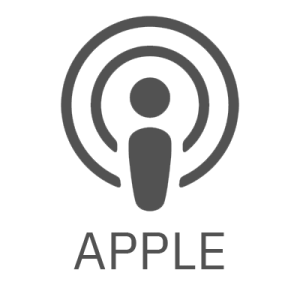
How do we build great workplace cultures to keep exceptional employees on our team? Join Dr. Janet Pilcher, author of Hardwiring Excellence in Education, as she explains how rounding is key to building environments where employees feel motivated and deeply connected to their work. Janet emphasizes how rounding helps leaders address any challenges that get in the way of employees being able to do their best work and demonstrates how rounding can be used to recognize bright spots and people who are doing good work. Listen now to learn to how we round, why we round, and what questions to ask our employees when we round.
This episode addresses questions such as:
- How does rounding build a deep connection between employees and their work?
- What key questions should drive rounding conversations?
- How can the 3 to 1 tactic be utilized in rounding conversations to build an emotional bank account?
Latest Episodes
[Intro music plays in the background.]
Janet Pilcher: Hello, everyone. Welcome to Accelerate Your Performance. I’m Janet Pilcher, the host of this show. It’s great to have you with us. And today, I’m going to focus on one of our key leadership fundamental tactics in the Nine Principles Framework: leader rounding. And really, it’s broader than just leader rounding. It’s focusing on rounding conversations.
I pull this in today because as you listen to the episodes over the last several years, you hear people and leaders and those individuals that we work with and our team talk about the significance of leader rounding.
Leader rounding is one of our most important tactics that help build great workplace cultures, help leaders become connected to the people that they work with each and every day, and those team members being connected to their leaders, and ensuring that we do the things that we need to do to recognize the bright spots that are out there and to address any challenges that get in the way of people doing their best work.
So that’s what I’m going to focus on today, really looking at that outcome of “how do we build great cultures?” and “how do we keep people who do great work with us on our team?” As leaders, we have a key job. We have that job to lead in ways that create places where people are deeply connected to their work. That’s what I focus on in my book, Hardwiring Excellence in Education, to really do the things that are significant with individuals that we work with and with those that we serve that help people be deeply connected to their work.
You know, we want students in our classes to be deeply connected to the work. What does that mean? People want to be deeply connected to their work. We want to know how what we do matters, how we help others, how people we serve know that we have their best interest at heart, and how we can help our organization achieve success. That’s what it means to be deeply connected to the work.
I believe that most people in education want to come to work to make a difference in others’ lives. We choose education because we are deeply passionate about students and their families.
This morning, I was having a conversation with a new leader of one of the organizations that we work with. It was such a great conversation with Kerry. She was talking about how the book helped her. She’s also in a doctoral program right now. She said, “I’ve been using the book in my doctoral program as a great resource.”
She said she keeps the book on Hardwiring Excellence in Education on her desk and continuously refers to it, and she was expressing her gratitude to me. I was very appreciative of Kerry connecting with me in that way. I said to her, “when I was writing the book, I spent a lot of time building the approach to the book so that it was a helpful tool to people who were doing great work every day.” I hope that the book helps you in that way as well.
As we continued our conversation, we talked about good teaching. You know, that’s what teachers do. We end up talking about good teaching. We talked about the value of feedback, scaffolding learning, providing small chunks of instruction, and building enough but not too much discomfort in that learning process so that students learn.
We talked about what I call the critical learning point where students are introduced to concepts and topics, and we scaffold their learning through that process, and we want to create just enough discomfort but not too much so that they have that opportunity to be challenged and learn.
Isn’t that the way we all learn? We have to be a little uncomfortable and create that anxiety before we learn something new. That’s our jobs as teachers is to create just that right level of discomfort to be connected to that. We agreed that it’s feedback during that time when students work through the discomfort and that, that feedback, that coaching, helps students manage their anxiety, achieve small successes to eventually achieve the expected outcomes. And we also talked about it’s not always just the negative or the critical feedback that we have to give positive feedback so that we build the confidence of the learner.
We closed saying when we work with our teams leading is much like teaching; we coach our teams to success, we lead them through the discomfort by connecting with them and using the gift of feedback to get better. And we have to know how to provide feedback in the right way to help people learn, get better, improve, be deeply connected to their work.
Before we get there into that place, we really need to create a good relationship with people. We have to work at that. We have to start there. What I call that and others have called it and I just borrow from it is we need to develop that emotional bank account with others.
Several weeks ago in a podcast, we talked about—KK Owen and I—Dr. KK Owen and I, one of our coach leaders, talked about three to one role play, three to one feedback, three compliments to one critical piece of feedback helps get to a positive outcome. And it’s important in the way that we manage that feedback. That helps us build that emotional bank account.
And there are three other things that help us build that emotional bank account, having a personal connection with someone, reducing barriers and anxiety, helping them work through that discomfort or understanding what’s getting in the way of individuals being able to do their best work, and showing gratitude, recognizing those things that are good. These three things, that’s what rounding conversations do. They help us address these three areas.
So when we apply the three to one approach, three compliments to one critical piece of feedback, and rounding conversations, we begin to create a culture where people are engaging in their work, and they’re connected to what they do each and every day in a way where they want to get better and improve and contribute.
We also find that we begin to distance high and solid performers from those team members who resist change and simply go against building a positive culture for the fun of it. At first, we focus though on the people who want to come with us, the 90% of the people who are ready to travel this journey with us, to be part of a culture where we can be deeply connected to our work.
That’s step one. At some point, we will address performance issues and those continuing to resist, but that’s another tactic for another episode.
So why do we round with others? We may engage in rounding conversations and sessions with our direct reports to build trusting relationships with them. We may be a leader in a service department and engage in service rounding conversations focused on the quality of service we are providing. We may engage in rounding conversations throughout the organization to build relationships or check in on a new change. When something changes, we want to know how’s that going and do those one-on-one conversations. We may engage in rounding conversations with other collaborators of student learning. We may be a teacher and engage in consistent rounding conversations with students to check in on how students feel about how they’re learning, their instructional strategies and so on.
So when we talk about these rounding conversations, let’s remember “what are the rounding questions?” In general, there are in my mind two types of rounding questions, kind of in the same focus area. We always want to start with the positive. We want to make sure that we ask a question about things that are getting in the way, and we want to make sure that we ask questions about how we can recognize people who are doing good work.
So in relationship rounding, we may start with just a genuine connection with somebody, making sure that we know something about them where the conversation is genuine, where we want to be in this conversation and learn. We want to learn what’s working well for you in your work. We want to know what’s getting in the way of you doing your best work and we want to know if there’s anyone that’s been especially helpful to you and we’ll end the conversation as we close asking, “how can I be helpful to you as your leader?”
Sometimes we may want to twist that a little bit and there may be some change or some action that we’re asking people to execute, and we want to know how that’s going and how people are feeling about it. So we may ask “what’s been working well with this change?” Why is that working well? What could be improved with this change? Why does that need to be improved? Is there anyone who’s doing this change especially well? What did they do and what recommendation would you offer to us to do this change well?” Gathering information to help us recognize the things that are going well and do more of those and to know where there are challenges and to do something about that.
So then the other part of rounding that’s really critical after we listen intently in a genuine way, we want to make sure we follow up, we want to act on the input. So how could we do that? We may include rounding conversations as part of our meeting agendas. I like to build meeting agendas by using questions.
We may ask on our meeting agenda in our meetings, we may ask our team to tell us, “what were the bright spots when you were rounding? How can we spread those best practices across the organization? Which ones and how will we do so?”
We can have conversations at our meetings about what barriers surface, which ones can we solve, which ones need more study.
We can ask who was recognized by doing something really well, and what did they do? We may update information in our stoplight reports, and we may use certain tools to help us follow up.
We begin to have conversations about what we learn from rounding to act on them in our team meetings. We record the information on stoplight reports: green, yellow, red. Green are the areas that we show where there were barriers that we have continued to work on, and we’ve achieved those. Yellow in process, these are the areas that we’re working on, the challenges that we’re working on right now. And the red are areas where we’re not able to work on those right now and here’s why. And we may not be able to do the things in particular ways, but we may find different solutions to help overcome some of those challenges.
And one other way that we can very quickly act on the input is through what we call a three-to-one tool. We put three wins down from what we learned from rounding conversations. We have two areas to improve that we choose from what we learn from rounding conversations, and we have the one action that we’re going to take in order to improve our improvement, and we always end rounding, thank people for the work that they’ve done that others have recognized.
Let me end with a thank you note that one of our leader coaches recognized one of our team members. Karen Rasmussen is a team member who was recognized by KK Owen, and here’s a note that would go to Karen based on the recognition that KK provided.
“Hello Karen, I engaged in a rounding conversation with KK. During our conversation she recognized you and the survey team for your willingness to help her in her partner school districts.
Specifically, she talked about her partners wanting to do pulse check surveys as they entered the new school year. During the time of disruption, that wasn’t on the schedule, but you said ‘yes’ to build an adjustment that was needed. I so appreciate your leadership to help our partner organizations and our coaches. You are a great example of how to have agility during changing times to provide level 10 service. Karen, thank you for being an important member of our team. You are valuable to our team and to me. Thank you for what you do to make a difference for our coaches and partner organizations.”
That’s the note to Karen that gives specific information that was recognized by her colleague KK Owen. Think about what we would feel like when we get notes like that. I’ve got several notes from some of the team members that I lead. Very specific, very uplifting, and I keep them in the drawer right beside me at my desk. And sometimes in those difficult moments, I just bring one of them out and I read it just to build back the value of why we come to work every day so that we can all be deeply connected to our work.
People want to work in a trusting environment to build trust. We focus on building an emotional bank account with others. Rounding conversations let people know we care and that their feedback is important. It gives us a chance to work on issues that challenge people in the workplace to recognize those bright spots and to recognize people who are recognized by others for their work.
What a great tactic we have in rounding conversations. People want to be deeply connected to their work, to know they have purpose, and are doing worthwhile work and making a difference to those they serve each and every day.
[Outro music plays in the background.]
I thank you for tuning in to Accelerate Your Performance. I hope that this episode was helpful to you and I hope you leave today thinking about ways that you can build the emotional bank account for the people that you serve each and every day. Have a great week everyone.








